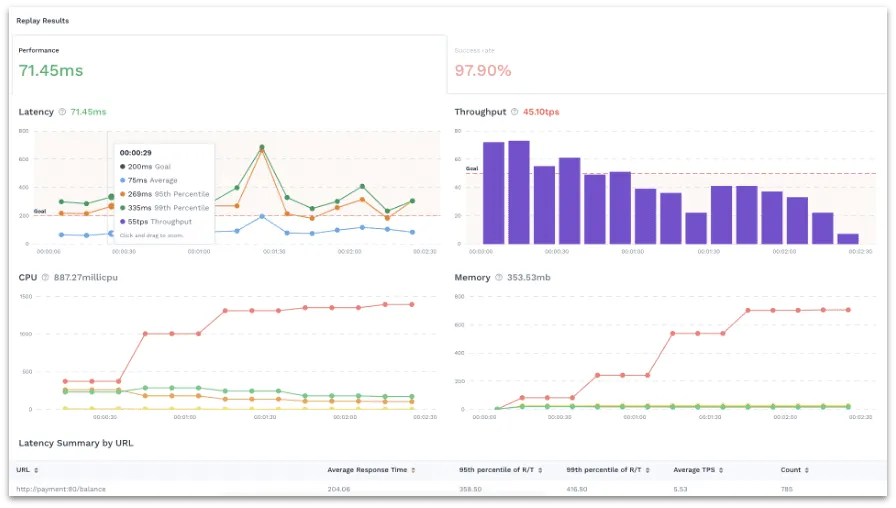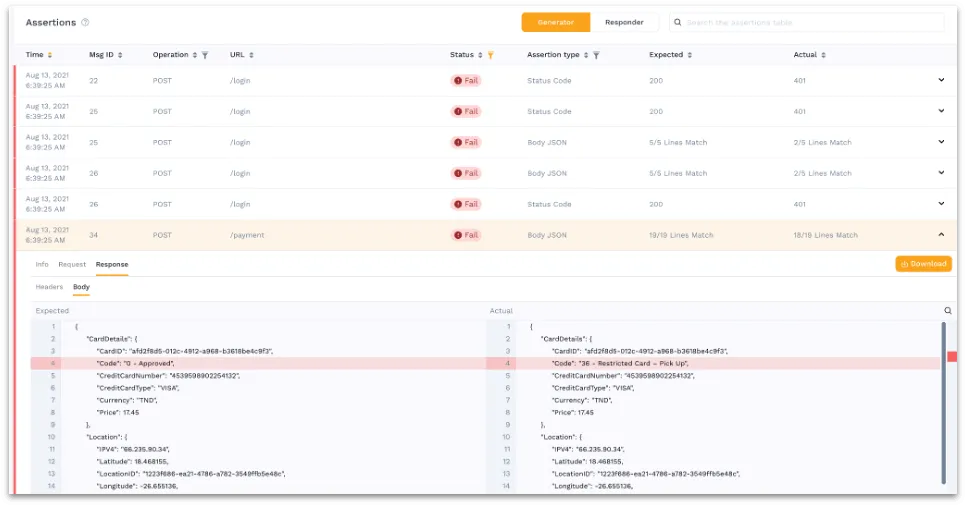Cloud native API Testing comes with a lot of challenges. In this video see how to overcome these challenges with the novel approach of traffic replay.
Challenges of Cloud Native API Testing
- How do clients call the API?
- Required dependencies can be missing.
- Test data has to be reset in between runs.
What is the Ideal API Testing Method?
- Identify what needs to be tested.
- Generate automation quickly.
- Run in a stable environment with the right data.
Identify what needs to be tested
- See the exact set of calls.
- Identify the technologies used by the API.
- Drill down to deep detail like request and response headers and payloads.
Generate API Test automation quickly
- Turn API traffic into test cases.
- Update security tokens, parameters, timestamps, etc.
- Check responses to every call.
Run in a stable environment
- Detect microservice dependencies.
- Turn API traffic into service mocks.
- Orchestrate the data and environment.
Use Case: Performance Testing for SRE
- Track the SRE Golden Signals:
- Latency: How long the API takes to respond.
- Throughput: How many transactions per second can the API handle.
- Success Rate: How many of the calls returned the correct value.
- Saturation: How did the underlying infrastructure perform under load.

Use Case: Functional Testing for SDET
- Assertions for every single call:
- Compare the actual against expected values.
- Visually demonstrate the differences.
- Integrate with CI to shift-left testing at code check-in or merge.

Value of Speedscale
- Software Engineers
- Spend less time writing scripts and more time building new features.
- Take out the guesswork by building realistic scenarios from live application traffic.
- SRE / DevOps
- The CI system runs faster without full E2E environments with lots of moving parts.
- Automatically produce SLO numbers to ensure the API meets expectations.
- Perform more validations to find issues before they reach production.
- Executives
- Deployments are safer when more automated testing is performed before each release.
- Cloud spend for non-prod can be up to 40% of the bill, reduce it with smaller environments.